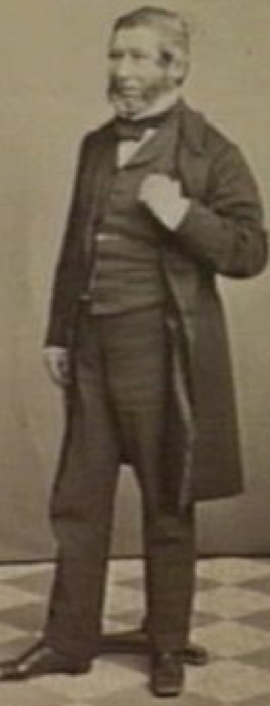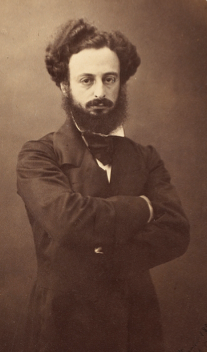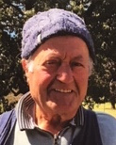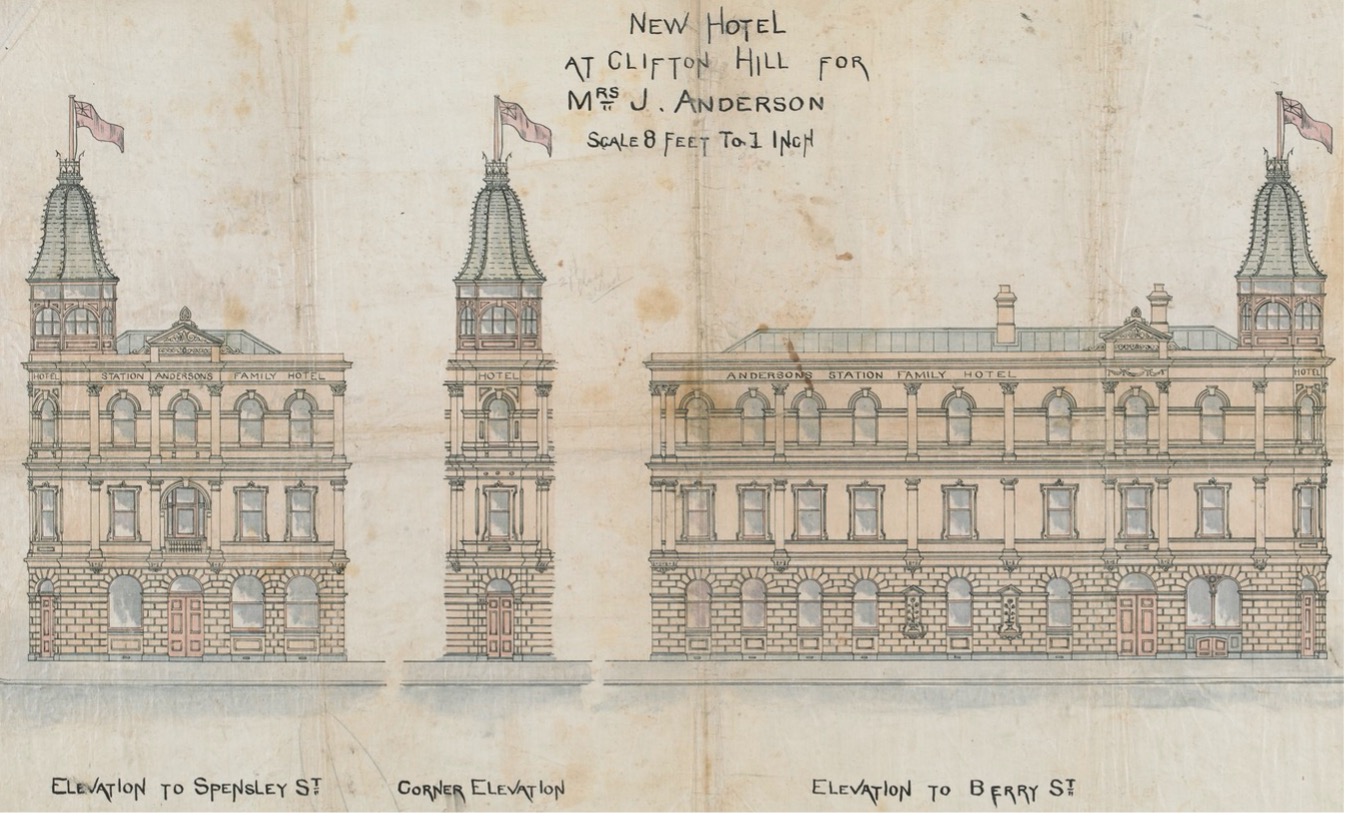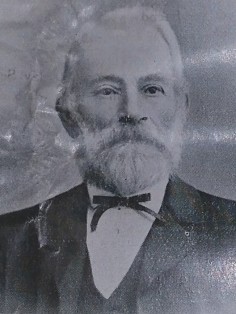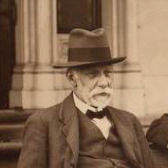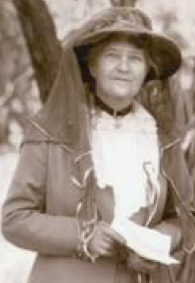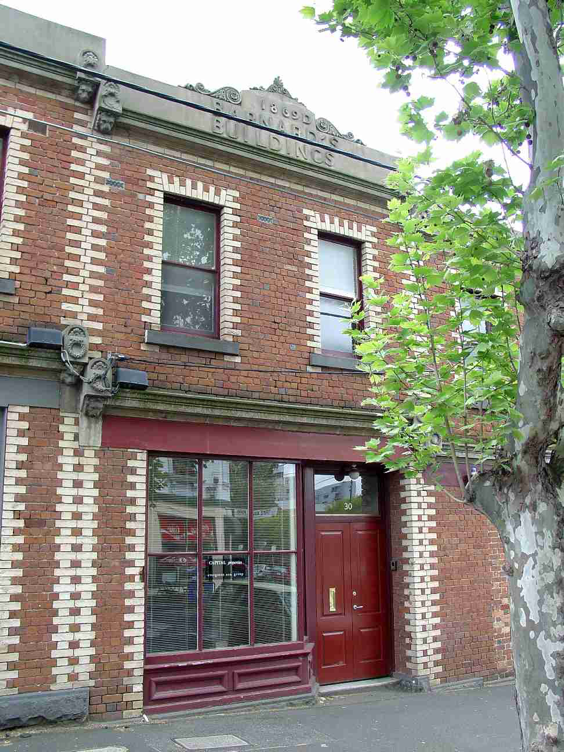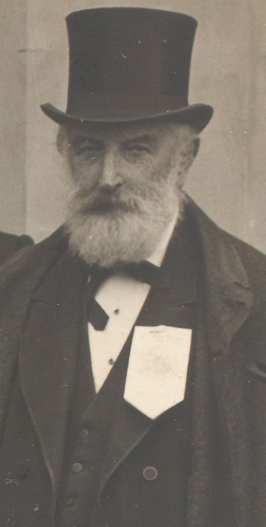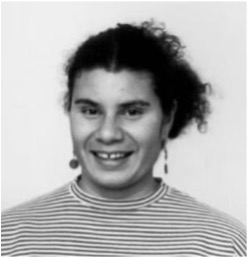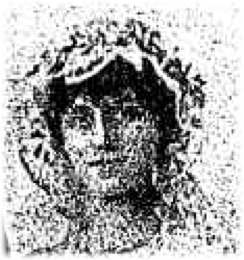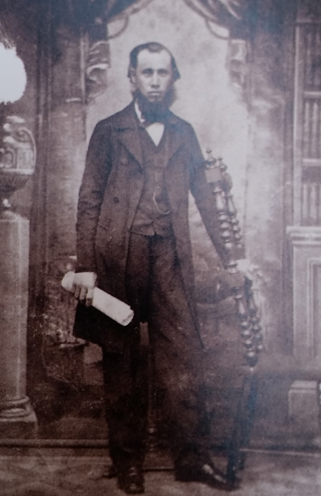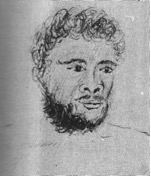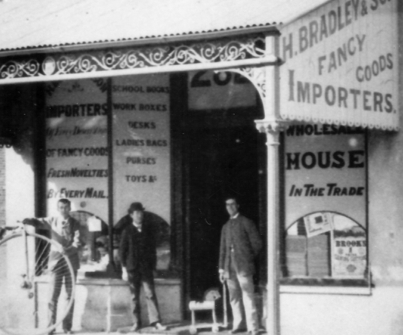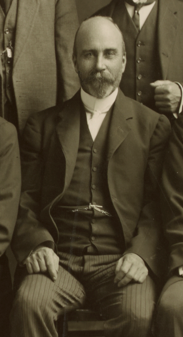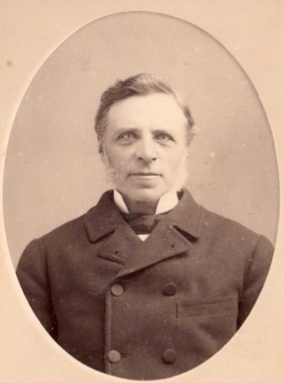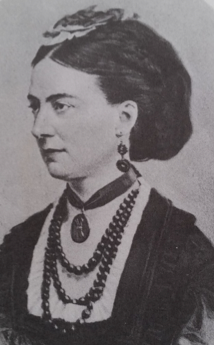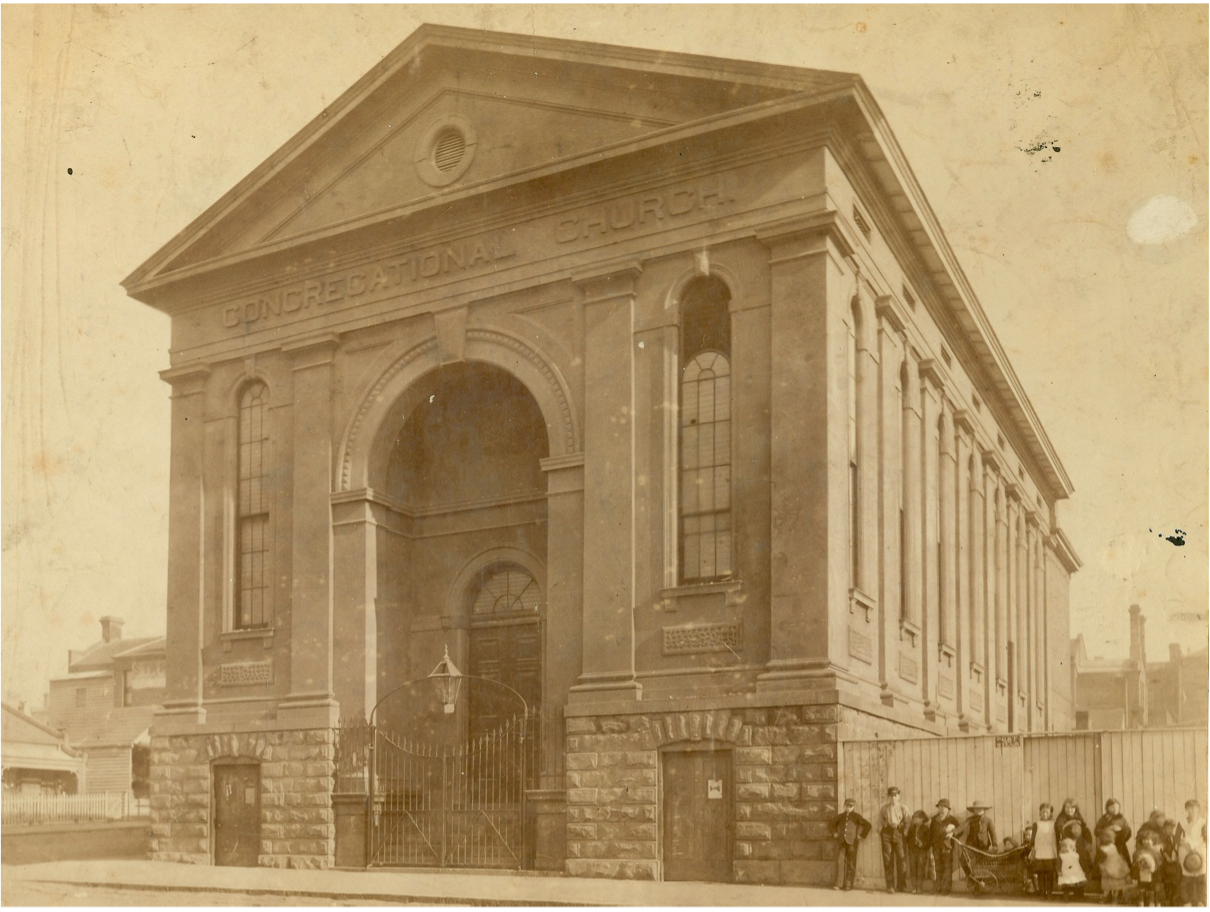Collingwood Notables Database
Thomas Turner a'Beckett
1808-1892
Solicitor, councillor, Member of Parliament
a’Beckett was elected to Collingwood council in the second year of the municipality’s existence, and was chairman or mayor of Collingwood Council from 1856 until 1859. He had practised as a solicitor in London, was interested in law reform, and had published a number of pamphlets before deciding to move to Victoria in 1850.
Edouard Laurent Adet
1829-1903
Wine merchant, French consul, Chevalier de l’ordre de la légion d’Honneur
Edouard Adet was born in Bordeaux and arrived in Melbourne in the 1850s. He was a partner in the firm of Curcier and Adet, wine merchants and was appointed acting French consul at the end of 1858 on the death of the Conte de Chabrillon, the incumbent. From around 1860 until the 1870s he made his home near the Yarra River at Greenford Cottage in Victoria Street Abbotsford, and here most of his seven children were born.
Giuseppe (Joe) Aiello
1937-2019
Shopkeeper, orchardist
Joe Aiello’s ‘Flower of Sorrento’ Continental Supermarket, at 58 Spensley Street, has provided a central meeting place and convenience shopping for residents of east Clifton Hill since its establishment in 1968. For many years shopping at ‘Joe’s’ has been part of the local culture, although for more recent residents this has become shopping at ‘Albert’s’ since Joe handed over running the shop to his son and daughter in 2000. Nonetheless Joe remained an important figure in the shop.
Mark Joseph Allan
1843-1927
Photographer
Prior to the development of amateur photography brought about by the Box Brownie after 1889, and more recently by compact cameras and the explosion of digital photography, the photographer’s studio was an important locale for those who wanted to record themselves for posterity. It remained so when a good quality photograph, copy, or mount was wanted. One of Collingwood’s longest-lasting photography studios was initiated in the 1880s by Mark Joseph Allan and continued under the name of the Allan Studio after his departure.
Josephine Anderson
1857 - 1914
Publican
Josephine Anderson (nee Graham) was the licensee of the Royal Hotel, Spensley Street, Clifton Hill from 1889 for many years, and family members continued to reside there after her death. Hotel keeping was an attractive vocation for women in the nineteenth and early twentieth century, a fact that has been obscured by the common view of the pub as a male bastion, home as its antithesis, and women as proponents of the temperance movement. In Collingwood in 1906, as many as 58% of hotels had a female publican.
Charles Baker
1821-1897
Anglican layman, printer
Thomas Baker
1854-1928
Manufacturing chemist, inventor, photographer, philanthropist
Thomas Baker was a well-known Abbotsford identity for many years, living at Yarra Grange in Southampton Crescent and establishing the firm of Baker and Rouse which became the largest supplier of photographic material in Australia. He eventually became managing director of Kodak (Australasia) which continued to operate on the Yarra Grange site and surrounds until the 1950s.
Alice Baker, CBE
1855-1935
Philanthropist
Alice Baker’s name is immortalised in the Thomas Baker, Alice Baker, and Eleanor Shaw Medical Research Institute which was established at the Alfred Hospital in the 1920s, and continues its work as the Baker Heart and Diabetes Institute. An Abbotsford resident for almost 40 years, she was well-known for her philanthropic and social activities and her membership of many women’s groups. Towards the end of her life she was made a Commander of the Order of the British Empire.
William Barnard
c. 1828-1902
Baker, pastrycook, publican
Isaac Barnet
c.1825-1909
Pawnbroker, jeweller, councillor
Isaac Barnet was the first owner of Floraston, a notable house still standing in Victoria Parade and built for him in 1875. The house was designed by Terry and Oakden and built by local builders James Nation and Co. With its arched façade and ceramic tiled spandrels, it makes a significant contribution to the Victoria Parade streetscape.
William David Beazley
1854 - 1912
Councillor, MLA, estate agent, Collingwood Football Club president, protectionist
William Beazley was renowned as a man strongly committed to the advancement of his hometown of Collingwood, and for his involvement in a wide range of local affairs. Whether as a councillor, member of parliament, supporter of sporting groups and working men, or president of the football club, his life revolved around the local community and its concerns.
Lisa Bellear
1961 - 2006
Indigenous artist, activist, academic, Collingwood Councillor
At the age of 27 Lisa Bellear become the City of Collingwood's first and only Aboriginal councillor. She went on to serve on the Victorian Stolen Generation Taskforce and Reconciliation Victoria. Not only a passionate advocate for Aboriginal rights, she was a broadcaster, photographer, dramatist and poet.
Mary Elsie Nathalie (Elsie) Berry
1882-1892
Elocutionist, elocution teacher
Elsie Berry, an elocutionist who grew up in Clifton Hill, represents a class of public performance which was very popular in the late nineteenth and early twentieth century but is rare nowadays. Elocution teachers proliferated partly through people’s desire to improve their everyday speech, but many were also popular performers. Concerts by elocutionists and their pupils were frequent, featuring character recitals, poetry, and humorous sketches, as well as songs and instrumental music. Elsie had a natural talent and even as a child showed an amazing gift of mimicry. After coming home from a concert she would throw the whole family into shrieks of laughter through her impersonations of one artist after the other.
Alfred Barrett Biggs
1825-1900
Teacher, inventor, astronomer
Alfred Biggs was appointed as the first head teacher at the United Methodist Free Church School in Hoddle Street Collingwood when it opened in 1858. He was assisted by his wife Harriet Biggs. The little school, funded under the auspices of the Denominational Board, consisted of a brick schoolroom measuring 38 feet by 24 feet, and a smaller timber building. It was on the southwest corner of Perry Street, and the young couple rented the conveniently nearby Clarendon Villa in Harmsworth Street. Their work would have been demanding. Most of the children would not have attended school prior to their arrival, and children of different ages would have contributed to the din in the small rooms. Moreover, Harriet, in charge of the Infants room, was also managing regular births and the sorrow of infant deaths; she had already had two children before starting at the school, the firstborn dying at the age of three months, and three more were born during her tenure, the last dying in April 1863. A month’s leave for childbirth was the norm, and Harriet’s health suffered.
Billibellary
c. 1799-1846
Aboriginal leader
Billibellary was an influential and important ngurungaeta, or spokesman, for the Wurundjeri–willum people at the time of the first European settlement of Melbourne. He was known as a chief of the Yarra tribe. His land was on the north side of the Yarra, including Yarra Bend Park and up the Merri Creek.
John Stirling Black
1832-1913
Chemist
Black took a position as assistant to the established chemist Carlington Marston in his Smith Street pharmacy and eventually took over the business. With two sons following him into pharmaceutical studies, the business continued into the 1930s as J.S. Black and Sons, and the 1867 building still exists.
Helen Bowie
1873-1959
Nurse, bacteriologist, amateur ethnographer, bird breeder, philanthropist, golfer
Helen Bowie, a resident of Queens Parade in Clifton Hill for over twenty years, was a nurse who studied bacteriology and worked in military hospitals in France in 1914-15. She assisted in organising and classifying the significant collection of stone implements and weapons amassed by her aunt’s husband, Dr George Horne. She was involved in a number of charitable concerns; she was also a keen golfer and became the first woman president of a golf club.
Henry Bradley
1831-1911
Tobacconist, fancy goods dealer, clay pipe manufacturer
Henry Bradley was the proud proprietor of a business in Smith Street Collingwood where he was a tobacconist and fancy goods dealer. According to Bradley’s biography in Victoria and its metropolis, his first shop was in the former residence of John Pascoe Fawkner, a founder of Melbourne, and a photo shows the name Fawkner House proudly emblazoned on the façade.
William Richard Butcher
1860-1933
Town clerk, tramways manager
W R Butcher held the position of Town Clerk of the City of Collingwood from 1907 until 1931, and was thus the longest-serving town clerk in the municipality until L. Dudley Cook (1962-1987). Prior to this appointment he was the manager of the Abbotsford tramway sheds which belonged to the Melbourne Tramway and Omnibus Company. He was an active member of St Philip’s Church.
James David Lyon Campbell
1809-1844
Early settler, pastoralist
J D L Campbell, usually known as Lyon Campbell, was one of Collingwood’s earliest residents, having bought Crown Portion 79 in the Government land sales of 1839. On this land, around 20 acres, he built a house called Campbellfield, designed by surveyor and architect Robert Russell. Here he lived until his untimely death in 1844. His neighbours along the riverfront in what was eventually called Abbotsford were other 1840s settlers such as John Dight, John Orr, Edward Curr and Georgiana McCrae.
Abbondio Campi
c. 1839 - 1896
Mirror manufacturer
Abbondio Campi is immortalised in the row of shops at 149 to 167 Queens Parade, Clifton Hill which bear the words ‘Campi’s Buildings’ on the pediment. Few passers-by would realise that the Italian-born owner of these buildings was also one of the master craftsmen of 19th century Melbourne.
Charles Mortimer Cherbury
1837-1917
Minister
English-born Charles Cherbury was a Baptist minister, who became the first incumbent of the Sackville Street Baptist Tabernacle, a position he held from 1874 until 1893. With a small number of Baptist adherents he established worship in a small hall in Gold Street, Collingwood, in January 1874. The congregation speedily grew, and within a few years construction of the church began in nearby Sackville Street.
William Thomas Chidzey
1847 - 1918
Builder
How could a man who spent most of his life in England, Adelaide, and Sydney, and only a few years in Collingwood, become a notable? Because, as a builder, he constructed so many houses in the area in such a short time, and several of his impressive buildings remain standing, or feature in contemporary photographs. But he was seemingly unaware of a cloud on the horizon ...
Emily Childers
c. 1827-1875
Diarist
Emily Childers, the wife of noted educationist and politician Hugh Culling Eardley Childers, kept a journal during the 1850s, including the years when the Childers lived in Abbotsford. Her journal gives a fascinating depiction of household and social life for a young wife and mother, as well as an insight into political events and the complexities of her husband’s work in the fledgling colony.
Emily Christopherson
1816 - 1897
Teacher
After emigrating to farm in New South Wales, followed by a sojourn living in imperial Russia, Emily Christopherson arrived in Melbourne in 1857 and commenced her long career in Collingwood schools. Matriarch of a teaching family, her son John, and her daughters Harriet and Pauline were also Collingwood teachers while her husband Irving taught in East Melbourne.

